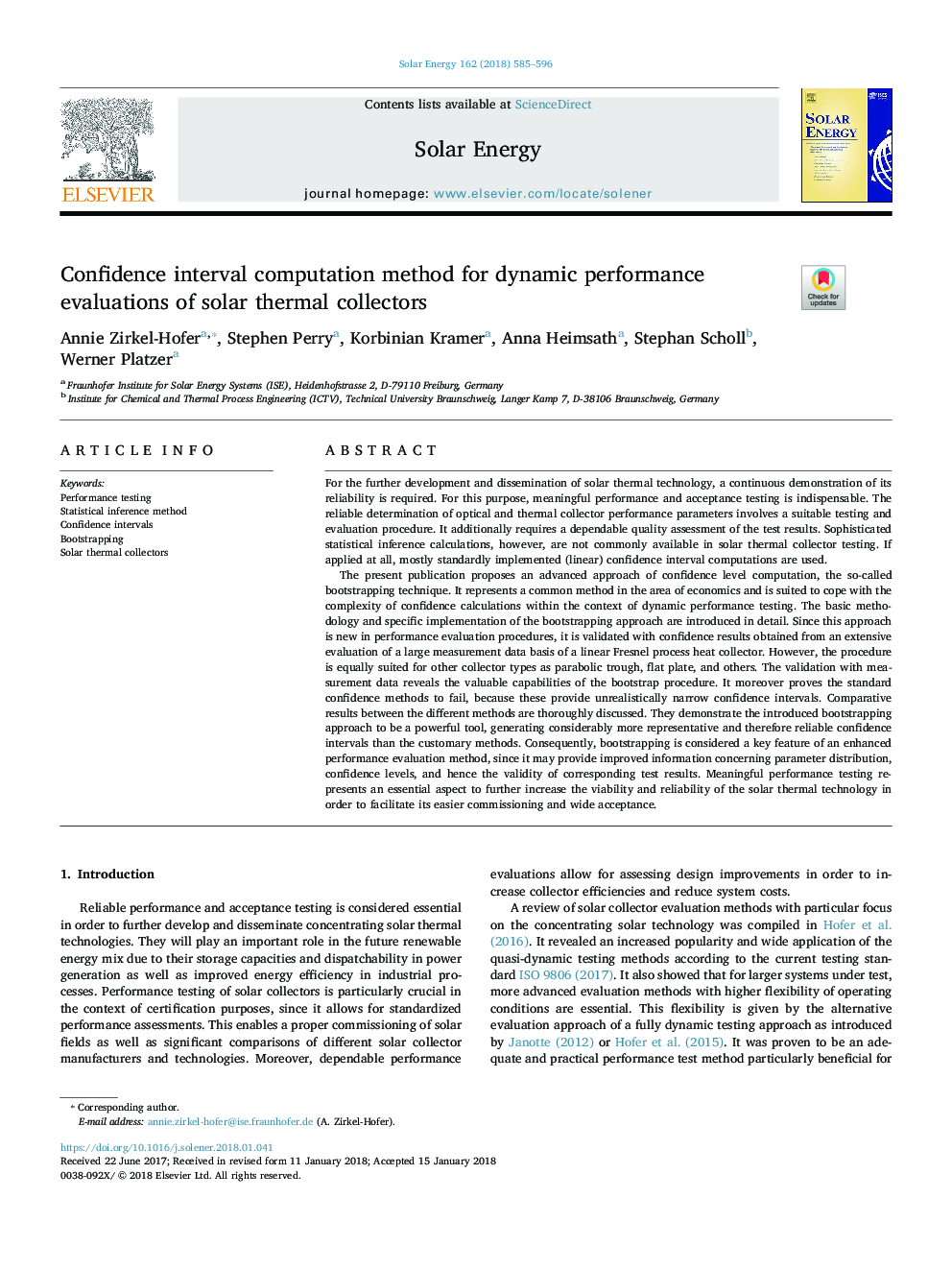| Article ID | Journal | Published Year | Pages | File Type |
|---|---|---|---|---|
| 7935774 | Solar Energy | 2018 | 12 Pages |
Abstract
The present publication proposes an advanced approach of confidence level computation, the so-called bootstrapping technique. It represents a common method in the area of economics and is suited to cope with the complexity of confidence calculations within the context of dynamic performance testing. The basic methodology and specific implementation of the bootstrapping approach are introduced in detail. Since this approach is new in performance evaluation procedures, it is validated with confidence results obtained from an extensive evaluation of a large measurement data basis of a linear Fresnel process heat collector. However, the procedure is equally suited for other collector types as parabolic trough, flat plate, and others. The validation with measurement data reveals the valuable capabilities of the bootstrap procedure. It moreover proves the standard confidence methods to fail, because these provide unrealistically narrow confidence intervals. Comparative results between the different methods are thoroughly discussed. They demonstrate the introduced bootstrapping approach to be a powerful tool, generating considerably more representative and therefore reliable confidence intervals than the customary methods. Consequently, bootstrapping is considered a key feature of an enhanced performance evaluation method, since it may provide improved information concerning parameter distribution, confidence levels, and hence the validity of corresponding test results. Meaningful performance testing represents an essential aspect to further increase the viability and reliability of the solar thermal technology in order to facilitate its easier commissioning and wide acceptance.
Related Topics
Physical Sciences and Engineering
Energy
Renewable Energy, Sustainability and the Environment
Authors
Annie Zirkel-Hofer, Stephen Perry, Korbinian Kramer, Anna Heimsath, Stephan Scholl, Werner Platzer,
